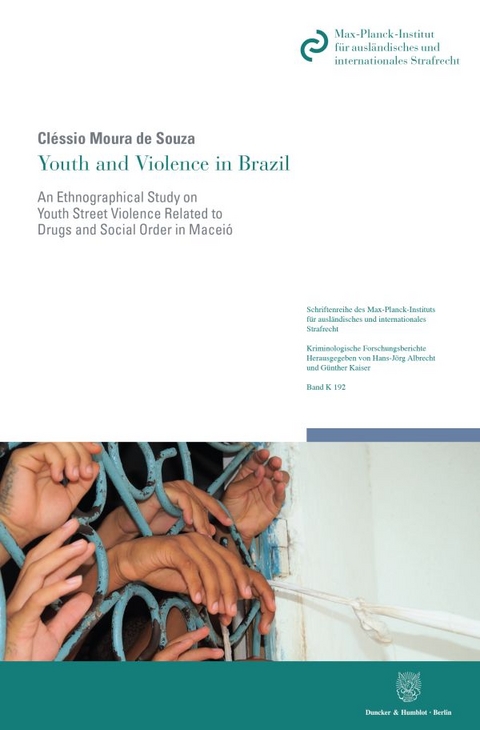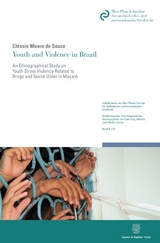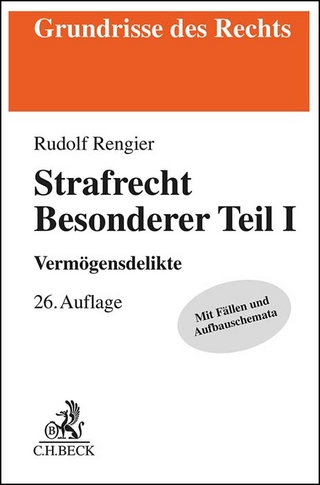Youth and Violence in Brazil.
Duncker & Humblot (Verlag)
978-3-428-18556-6 (ISBN)
This book consists of an ethnographical study based on participant observation and in-depth qualitative interviews with twenty-four male youths who had intense experiences with street violence. The data were mainly collected during seven months of fieldwork in Maceió in 2013. In January 2016, a second visit to Maceió took place to collect pictures of the neighborhoods where the interviewed youths came from, as well as of the prisons and internment units where young offenders are housed.
The aim of the research is to analyze the significance of violence among individuals and criminal groups and, furthermore, to assess the impact of this violence on the social order that governs the streets of Maceió. In addition, the role that drug trafficking has in this context is examined in order to better understand why this activity has become so attractive to youths and how drug-related street violence is used as an instrument of punishment to establish social control in local communities.
Introduction: On the Way to the Cemeteries and Prisons in Maceió
Homicide Rates in Latin America and Brazil: Clues about Street Violence – Street Violence and Drug Warfare in Brazil – Street Youth Violence in Maceió – Youth and Violence – Gangs, Criminal Groups, and Organized Crime – The Study in Maceió
1. Methods, Data, and Qualitative Analyses
Prior to Fieldwork – During Fieldwork – After Fieldwork
2. Grotas, Favelas, and Conjuntos Habitacionais: Marginalized Areas of Maceió
The Proliferation of Grotas and Favelas in Maceió – Conjuntos Habitacionais – Growing up in the Deprived Areas of Maceió – The Geography of Crime in Maceió
3. The Street as a Stage for Violent Acts
4. My Street, My Neighborhood, and My Domain: Social Ordering of Space and Drug Trade
Bocas: Dynamics of the Drug Business in Maceió – Soldiers and Coringas: Youth Criminal Groups in Maceió – Guilherme’s Cell: Coringa Sanguinário – Nessa Vida: Why Are Criminal Activities and the Drug Trade Attractive to Youths? – From Informal to Illegal Markets: Seeking Profit
5. Ruling the Environment: The Meaning of Street Violence in Maceió
Cabuetagem: Rule of Silence in Maceió – Rixa, Treta, and Bronca: The No-Crossing Rule in Maceió
6. Conclusion: What Do the Youths Wish for Their Future?
| Erscheinungsdatum | 25.03.2022 |
|---|---|
| Reihe/Serie | Schriftenreihe des Max-Planck-Instituts für ausländisches und internationales Strafrecht. Reihe K: Kriminologische Forschungsberichte ; 192 |
| Zusatzinfo | 11 Tab., 56 farb. Abb.; XXIII, 228 S., 56 farb. Abb., 11 schw.-w. Tab. |
| Verlagsort | Berlin |
| Sprache | englisch |
| Maße | 148 x 224 mm |
| Gewicht | 340 g |
| Themenwelt | Recht / Steuern ► EU / Internationales Recht |
| Recht / Steuern ► Strafrecht ► Besonderes Strafrecht | |
| Schlagworte | Criminal Groups • Ethnografical Study • street violence |
| ISBN-10 | 3-428-18556-0 / 3428185560 |
| ISBN-13 | 978-3-428-18556-6 / 9783428185566 |
| Zustand | Neuware |
| Haben Sie eine Frage zum Produkt? |
aus dem Bereich




